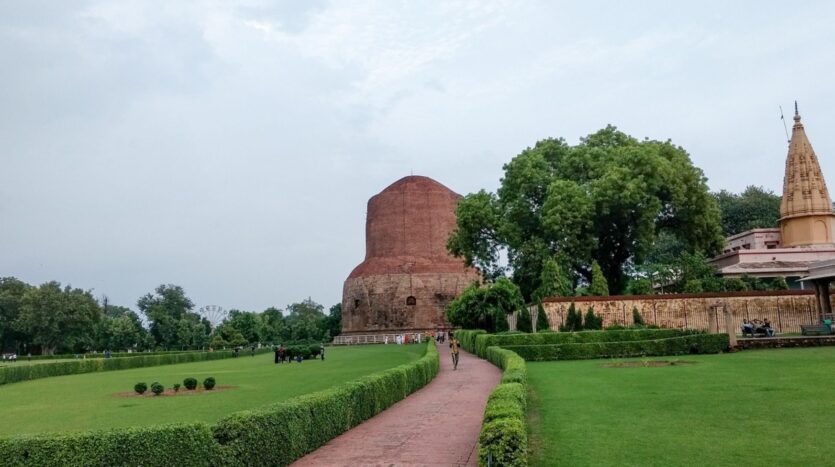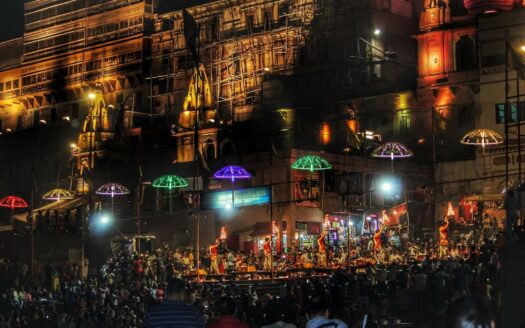Sarnath Sightseeing: Exploring the Timeless Charm of Sarnath
Nestled on the banks of the serene Ganges River, Sarnath is a place where time seems to stand still. This ancient city, located just a short drive from the bustling streets of Varanasi in India, holds a special place in the hearts of millions of people worldwide. Sarnath is a site of immense historical and spiritual significance, where the story of Buddhism began and where visitors can immerse themselves in a rich tapestry of culture, religion, and history. Let’s go for Sarnath Sightseeing
A Glimpse into History
Sarnath’s historical roots trace back over two millennia, making it one of the oldest continuously inhabited places in the world. It’s here that Prince Siddhartha Gautama, later known as Buddha, delivered his first sermon, known as the “Dhammacakkappavattana Sutta,” after attaining enlightenment in Bodh Gaya. This event, often referred to as the “Turning of the Wheel of Dharma,” marked the birth of Buddhism.
One of the most iconic landmarks in Sarnath is the Dhamek Stupa. This massive cylindrical structure, standing at a height of 43.6 meters, is believed to mark the exact spot where Buddha gave his first sermon.
The stupa is adorned with intricate carvings and is a symbol of Buddhism’s rich history. As you stand in front of this awe-inspiring structure, you can’t help but feel a profound sense of connection to the past and the teachings that continue to guide countless lives today.
Spiritual Enlightenment
Sarnath is not just a place for history buffs; it’s also a sanctuary for spiritual seekers. The tranquil ambiance of this sacred site provides the perfect backdrop for introspection and meditation. Many visitors come to Sarnath to meditate under the Bodhi tree, a descendant of the original tree under which Buddha achieved enlightenment.
The peaceful rustling of the leaves and the gentle whispers of the Ganges create a serene atmosphere that encourages reflection and inner peace.
While Sarnath Sightseeing, make sure to visit the Mulagandhakuti Vihara, a Buddhist temple built by the great Emperor Ashoka in the 3rd century BCE. The temple houses relics and artifacts from Buddha’s life and offers a place for devotees to offer their prayers.
The sight of pilgrims prostrating before the ancient statues is a poignant reminder of the enduring power of faith.
Exploring the Archaeological Treasures
Sarnath is a treasure trove for history enthusiasts and archaeologists. The Archaeological Museum in Sarnath showcases a remarkable collection of sculptures, artifacts, and relics excavated from the site. These artifacts provide a glimpse into the daily life, art, and architecture of ancient India.
One of the most significant artifacts on display is the famous Lion Capital of Ashoka, which now serves as the national emblem of India. This iconic sculpture, carved from a single block of polished sandstone, is adorned with four majestic lions standing back to back.
The museum also houses numerous statues of Buddha in various postures, each radiating a sense of peace and enlightenment.
Varied Cultural Experiences
Sarnath is not just a place for Buddhist pilgrims; it’s a destination where diverse cultures converge. The city’s cultural richness is exemplified through the various festivals celebrated here, including Buddha Purnima, which marks Buddha’s birth, enlightenment, and death.
During Buddha Purnima, Sarnath comes alive with colorful processions, prayer ceremonies, and cultural performances. The vibrant atmosphere is infectious, and even if you’re not a part of the Buddhist community, you can’t help but be swept up in the celebrations.
Culinary Delights
No trip to Sarnath Sightseeing would be complete without savoring the local cuisine. The region offers a delectable blend of North Indian flavors, with a focus on vegetarian dishes. Dal Baati Churma, a Rajasthani specialty, is a must-try, consisting of lentils, wheat balls, and crushed sweet wheat.
The local street food vendors also serve mouthwatering chaat (savory snacks) and lassi (a yogurt-based drink) that are sure to tantalize your taste buds.
A Place of Serenity and Reflection
Sarnath’s allure lies not only in its historical and cultural significance but also in its ability to offer visitors a space for serenity and reflection. The sprawling gardens and open spaces provide ample opportunities to unwind and contemplate life’s deeper questions.
As you stroll through the well-maintained gardens, you’ll come across meditating monks and individuals engrossed in their own spiritual journeys.
The pervasive sense of peace and the unity of purpose among those present create an environment where you can disconnect from the chaos of the outside world and connect with your inner self.
Practical Information for Visitors
- Getting There: Sarnath is easily accessible from Varanasi, which is well-connected by air, train, and road. The nearest airport is Lal Bahadur Shastri International Airport in Varanasi, and the city has a major railway station.
- Accommodation: Varanasi offers a wide range of accommodation options to suit all budgets. From luxury hotels to budget guesthouses, you’ll find a place to stay that meets your needs.
- Best Time to Visit: The ideal time to visit Sarnath is from October to March when the weather is pleasant. Avoid the scorching summer months, especially from April to June.
- Dress Code: When visiting temples and sacred sites, it’s advisable to dress modestly, covering your shoulders and knees as a sign of respect.
Conclusion
Sarnath, with its rich history, spiritual significance, and serene ambiance, is a destination that leaves a lasting impression on all who visit. Whether you’re a history enthusiast, a spiritual seeker, or simply a traveler in search of a unique experience, Sarnath has something to offer everyone.
This timeless city is a testament to the enduring legacy of Buddhism and a place where the past and present coexist in perfect harmony, inviting you to embark on a journey to Sarnath Sightseeing.




